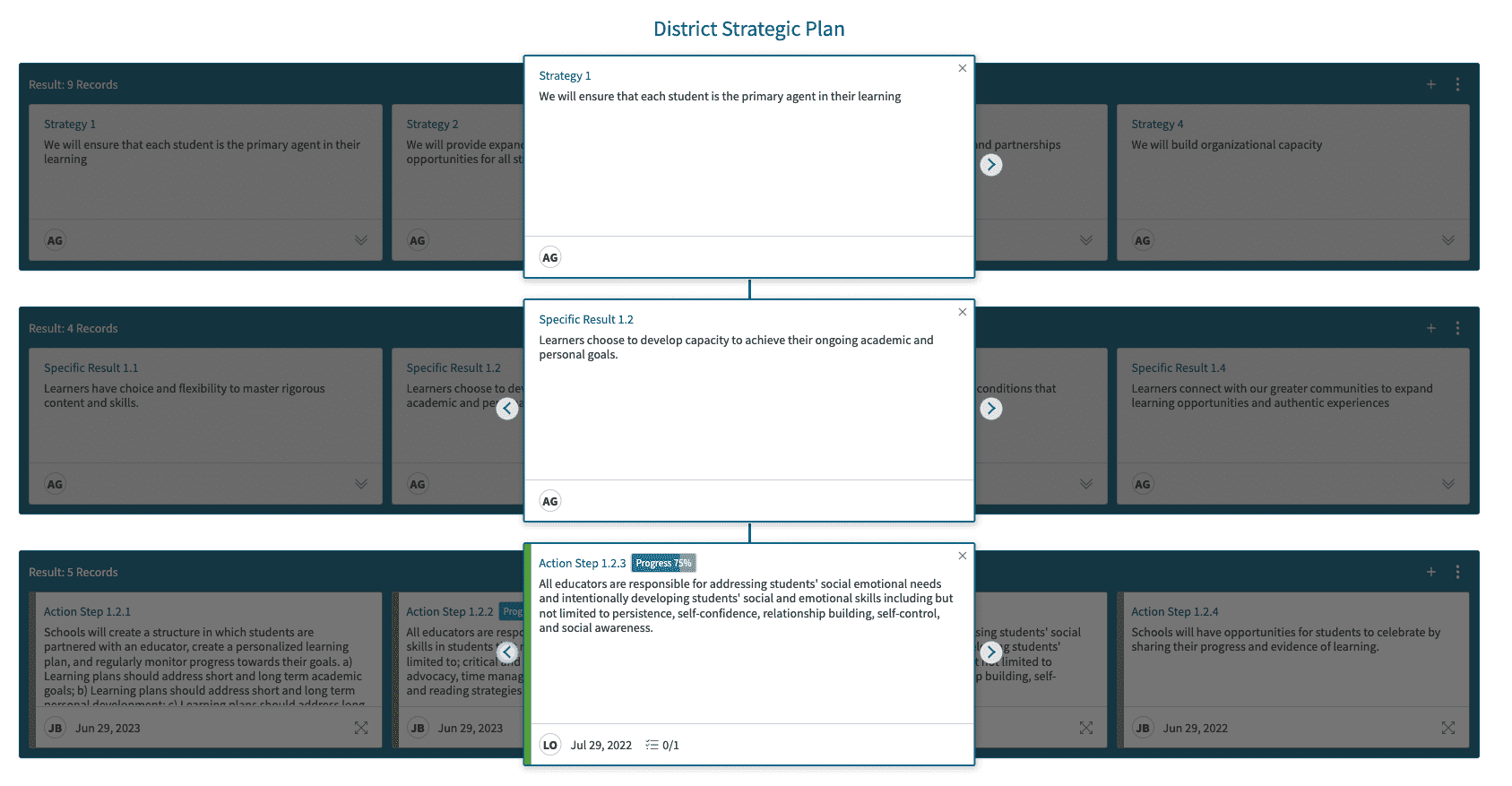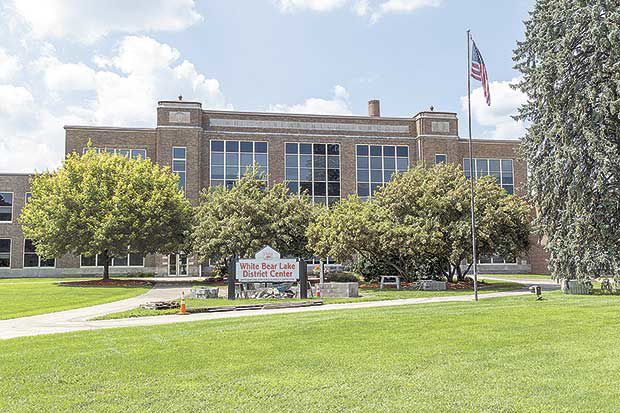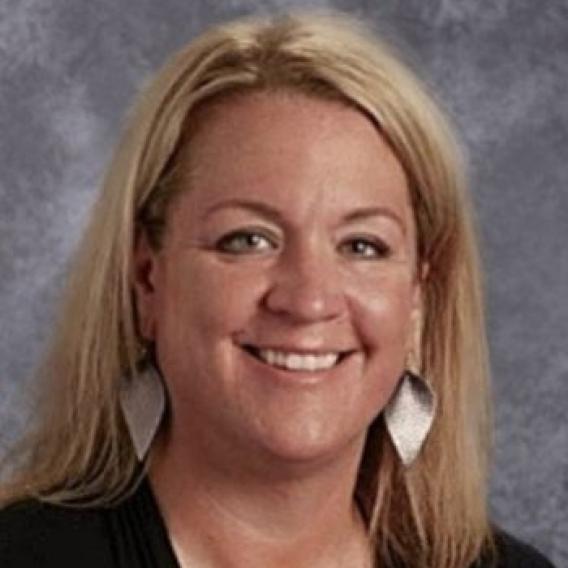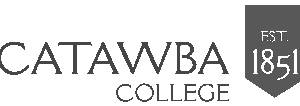Education with community vision.
White Bear Lake Area Schools crafted a bold, community-informed strategic plan to prepare students for an evolving world. With Envisio, they’ve connected building-level and district goals, tracked progress even through the pandemic, and shared ownership across staff. Now, WBLAS continues to shape modern learning environments that truly put students first, keeping parents and residents engaged along the way.
White Bear Lake Area School District puts education first by executing on their strategic vision
White Bear Lake Area School District (WBLAS) in Ramsey County, Minnesota, is made up of a large set of schools, educators and students – 22 schools, approximately 1500 staff and just over 9,000 students, to be exact. Gaining community and organizational buy-in for their groundbreaking strategic plan, and delivering on that plan during the COVID-19 pandemic, has been an exercise in alignment and excellence.
“We’re in the fourth year of our strategic plan,” says Dr. Alison Gillespie, the Assistant Superintendent for Teaching and Learning with WBLAS. “It started five years ago, when our superintendent, Dr. Wayne Kazmierczak, came onboard. The first thing he did was to develop a new strategic plan, which we put together by undergoing a really comprehensive process during that first year.”
The WBLAS team understood that in forming a strategic plan and strategic planning model, they needed something that put education first while still formulating a mission that reflected the values of their community.
Doing so, says Alison, was an enormous endeavor that they did not take lightly.
“We had more than 300 community members involved in the process, along with our staff, who came together to create our strategic plan. An initial group of 30 stakeholder representatives of our community worked collaboratively to create our mission statement and district values. From there, we developed our strategic plan.”
“The plan is unique because it’s so big. It has nine overarching strategies, and underneath each of those strategies, we have a variety of action steps and specific, desired results that were developed in concert with our community members.”
A bright future for students requires planning ahead
Ensuring that students are prepared for the challenges they may face in the future is no easy task, and requires the administrators and educators at WBLAS to remain agile and amenable to change as they work. These skills, which would prove to be useful for navigating the educational and employment challenges brought on by the pandemic, even require a bit of “un-learning” for educators.
Preparing students for a changing future
“It’s difficult, because you’re trying to help students prepare for the future – to prepare for jobs that might not exist yet. You’re trying to develop educators and an education that gives them the skills to think critically,” says Alison.
“And so our strategic plan is very forward-thinking. It’s centered around active learning, and allowing students to be in charge of their own learning. It’s a type of education that many of us never experienced, and that can be hard to imagine sometimes. We’ve experienced a very traditional kind of education, and our educators have too. So change can sometimes be difficult for those of us who are used to this really old-fashioned way of approaching learning, but it’s unavoidable with the way things move so rapidly in the world nowadays.”

Alignment from district to classroom
But developing a district level plan that put education at the forefront was only the first step in WBLAS’s strategic initiative – crafting building-level plans that dovetailed into the district plan was next.
“The following year, each of our schools then went through their own planning process, and each one now has a unique building-level plan that’s aligned with our district’s strategic plan,” says Alison. “The premise of this exercise was to ensure that as these schools work on delivering on their own mission statement and action items, they are actually contributing to our entire district reaching its strategic goals.”
A big part of the success of these “siloed-but-not” action plans is made possible through Envisio.
Shared goals, stronger connections
“With Envisio, we were able to connect the items each school wanted to work on with our district goals,” says Alison. “I was also able to connect schools that have similar action steps or specific results they are trying to achieve. Now, when district leaders are looking to either begin new work, or learn more about the work they’re currently doing, they can connect with other schools in the district to see how they are doing it.”
This process of internal benchmarking and knowledge-sharing within the district has helped redefine their culture, says Alison.
“Our goal is to change the culture so that things don’t feel top-down,” she says. “We all know that education works best when those closest to the kids own the work and are excited about it, so being able to share knowledge and have everyone buy in has been a really big help for us at the district level. We have such a big strategic plan and we do such a variety of work across our schools that it can be tough to know where to start.”
Not anymore!
Thinking ahead requires facilities that are up-to-date
“Once we understood that our strategic plan was going to redefine the way our students learn, we knew we would need to take this opportunity to overhaul our facilities. We couldn’t let them be a barrier to creating the type of learning environment we want to cultivate.”
“We knew that we had some facilities that were aging, that we were a growing district, and that eventually we’d need to expand, renovate and add to our existing facilities. In doing so, we wanted education to be both the reason and the guiding force behind the decisions we made regarding our campuses.”
To accomplish this, Dr. Kazmierczak and the team at WBLAS went back to the people who had helped them identify their mission in the first place – the community.
Community support fuels transformation
“We passed a referendum, and it was the largest in Minnesota state history. Each one of our schools is getting enhanced facilities,” says Alison.
And while the pandemic has certainly affected the way WBLAS has gone about executing on their strategic plan, it hasn’t necessarily inhibited their progress.
“We’ve completed projects already,” says Alison. “Construction continued throughout the pandemic, which was really exciting for us. And through it all, our strategic plan has continued to inform our decisions about what type of learning environment we’re building for our students. That’s been invaluable. We’ve had to make decisions on learning models, remote work, distance learning… we’ve been able to root those decisions in asking what does our strategic plan compel us to do, and what opportunities have emerged along the way?”
In a time when many organizations are simply trying to manage, to get by, or to keep their heads above water, Alison and the WBLAS team have used their strategic execution and forward-thinking philosophies to not only survive, but thrive.
“We kept asking ourselves, can we actually accelerate some of these changes our community has asked for? People are going through so much right now, and we keep talking about what we can do to help them, and our students, emerge better than we were before.”
Navigating a crisis is easier with a roadmap
Along with the flexibility and diligence of their district leadership and educators, Alison credits Envisio’s platform for helping ensure that their strategic plan has stayed actionable and, in many ways, a guiding force throughout the pandemic.
Keeping plans active and authentic

“One of the biggest things for us with Envisio is that our strategic plan isn’t just something that sits on a shelf. Every school district, every organization I would imagine, knows the value of strategic plans, but sometimes they can be managed or maintained in a very inauthentic way.
“Envisio also allows us to share the responsibility of moving our organization forward strategically, and giving everyone some sense of ownership over our strategic plan. That sense of ownership is there at the district level, and at the building level. And you notice that people talk about the plan more in meetings. There are more updates, they understand how the work they are doing is feeding back up into the strategic plan. That shared ownership is really important, and it has been an anchor for all of us in a time when it has been otherwise difficult to stay aligned.”
“Having Enviso as the through-line, creating schedules for updates, having automatic reminders, has helped all of us engage with our work in a more authentic way.”
Staying connected in times of crisis
And while they were able to use Envisio to maintain strategic alignment and actually accelerate their progress in some areas, Alison is quick to stress that their pandemic successes were hard earned – dealing with the challenges that arose from the transition to distance learning was a massive undertaking for the district, their students, and the community at large.
“In a remote environment, we had to think differently about teaching and learning,” says Alison. “We asked often, how can we help our educators? Because the change was so jarring, how do we experience that change so that we don’t go backwards and that all our good work isn’t for naught? And it hasn’t been perfect. It’s been messy at times. For us as educators, that can be tough. We like things to be smooth and we’re used to success, but I think getting used to that messiness, and finding success inside of it, has been the challenge for us during the pandemic. And that’s exciting, in a way. We try to model that for our staff, our students and our community – it’s been important to make sure they understand what we’re doing, as they aren’t used to changes like this.”
Keeping the community informed, updated and educated on what the district is doing has been an invaluable part of having Envisio on board and integrated into their strategic execution and performance measure initiatives, says Alison. It’s a big change from where they were prior.
Visibility builds better communication and trust
Alison and her team at WBLAS plan to continue to leverage Envisio’s strategic execution and performance management tools to maintain their strategic plan, amend it where necessary, and report back easily to their internal and external stakeholders.
“We were using Trello before Envisio, and it was really dependent on one person to maintain it. As part of a special assignment, I was brought on to be the internal facilitator for our strategic plan, and one of my main goals was to onboard a tool so that the superintendent could gauge our progress. With Envisio, we could assign metrics, and in time we’ll develop a public facing dashboard that reports on these metrics. It’s more aligned with the type of communication model that we wanted to build.”
“Envisio is so organized and easy to use. I wanted something with detailed reports, knowing that we’d be using them for internal accountability, both in our office and with the district leaders. Being able to develop a public-facing dashboard is really exciting to me, so we can better communicate with our community on the progress we are making. And given the size and scope of our strategic plan, and in the interest of it not being a plan that just sits on a shelf, I needed something that could help organize it. Envisio made it easy and efficient, and what could have been an overwhelming strategic plan isn’t overwhelming at all.”
Future-proofed learning
Campus upgrades, and student activities show how strategic planning transforms both spaces and experiences for learners.



